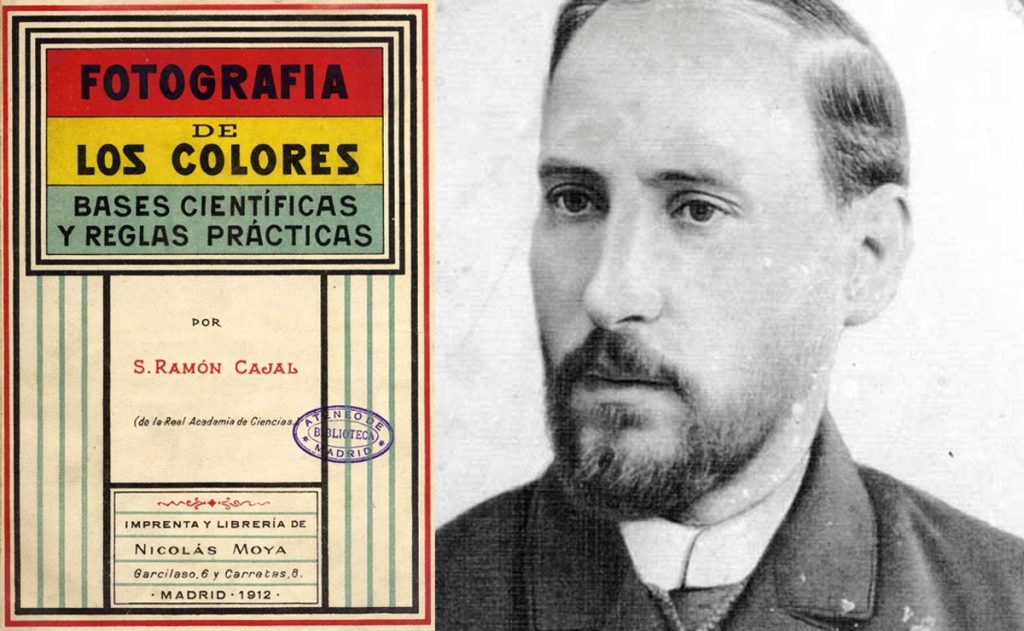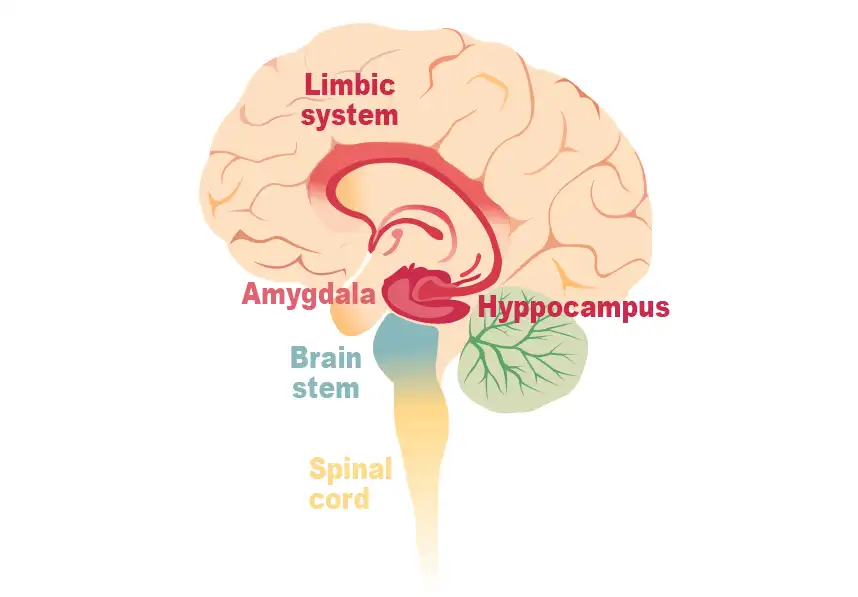Photography for me is not looking, it’s feeling. If you can’t feel what you’re looking at, then you’re never going to get others to feel anything when they look at your pictures.
Don McCullin
Some images activate our limbic system, connecting deeply to our emotions and memories.
By understanding how our brain processes images, we can use this ability to enrich our emotional lives, foster greater self-knowledge, and –why not?– take better photographs. Ansel Adams said, “In my mind’s eye, I visualize how a particular sight and feeling will appear on a print. If it excites me, there is a good chance it will make a good photograph.”

Cover of The Photography of Colors (1912) from the Museo Archivo Histórico de la Sen
Ramón y Cajal is renowned throughout history as the discoverer of the brain’s architecture and a passionate photography enthusiast. Today, neuroscience provides us with many insights into how the brain functions, and the connection between the brain, emotions, and other organs is now backed by solid scientific evidence. Our breathing modulates the brain areas responsible for attention, memory, and emotion. The gut influences our mood, and the heart works in partnership with the brain to shape perception and emotions. Henri Cartier-Bresson was anything but absent-minded when he remarked, “To photograph is to align the head, the eye, and the heart on the same axis
When we experience excitement, our entire organism is engaged. This statement resonates deeply when we consider the limbic system’s vital role in emotional processing and memory formation.
The limbic system, which includes key structures such as the amygdala, hippocampus, and cingulate gyrus, processes emotions and memories through images and significantly influences our lives.
The limbic system does not use words; it processes the world through images. With images, we can express, understand, and transcend, as they have the power to connect with the deepest parts of ourselves and hold significant therapeutic value.
I speak through my photographs more intricately, more deeply than with words.
Richard Avedon

Let’s explore how these structures make some images especially meaningful to our brain:
The amygdala activates in response to emotional visual stimuli.
For example, seeing a photograph of a loved one can evoke feelings of joy and love, while an image of a familiar natural disaster can provoke fear and sadness. The emotional response we experience when viewing these images is mediated by the amygdala, which detects threats and pleasures, preparing the body for an appropriate reaction.
The hippocampus is essential for forming and consolidating memories.
Many images can be powerful triggers for memories. Seeing a photograph of a place where you spent an unforgettable holiday may trigger a cascade of vivid memories about the experience, from the sea breeze to the conversations, kisses, and shared laughter.
People in publicity know this very well.
Images can establish strong associations between visual stimuli and emotional experiences. An image of a happy family in a park can evoke feelings of happiness and well-being, positively shaping our perception of the advertised product. It is that simple. When humor or an atmosphere of relaxation, peace, or vacation is added, the perfume becomes even more appealing.

Sebastião Salgado
Some images generate feelings of wonder and deep reflection. For example, the images of photographer Sebastião Salgado. His work is internationally renowned for capturing both the essence of the human condition and the majesty of the natural world. His black-and-white photographs not only document but evoke a strong emotional response. The philosopher Hegel said, “Art is a particular form through which the spirit manifests itself.” Salgado’s art serves as a vehicle for exploring and expressing emotions that are often difficult to put into words. Sebastião Salgado’s pictures engage our limbic system, inviting us to witness the struggle, hope, and dignity of people from diverse cultures and contexts while prompting reflection on the beauty and fragility of our planet.
Movies are another powerful example. Some films are heartwarming, where the aesthetics, imagery, music, the characters’ facial expressions, and cinematography combine to create an intense emotional experience.
In the Mood for Love
The imagery in Wong Kar-wai’s film In the Mood for Love is a prime example. This cinematic masterpiece is renowned for its stunning visual aesthetics and profound exploration of intimacy and melancholy. The film masterfully uses photography, colors, and composition to convey complex and subtle emotions. It immerses us in the inner worlds of its characters, weaving a narrative of unrequited desire and nostalgia. Images of furtive encounters in narrow corridors and silent, longing gazes create a deeply resonating atmosphere, engaging our limbic system and inviting us to reflect on love, loss, and the passage of time.
Our limbic system processes images repeatedly, leaving us with lasting impressions that play a crucial role in shaping our perspective on certain aspects of life.

In the Mood for Love frame
I suggest doing a photographic exercise to deepen the connection between the images and emotions processed by the limbic system:
- Select between 5 and 10 images that hold emotional significance for you. They can be photographs of happy moments, special places or people, or even artistic images that deeply move you.
- Please spend a few minutes observing each image, focusing on the emotions they stir and any specific memories they bring to mind. Write down what you feel and the memories that emerge for every image.
- Once completed, review your notes, and reflect on what patterns you can identify in your emotional responses. What do they have in common? Identify frequent emotions. For example, do you feel joy, sadness, anxiety, anger, fear, etc.? Are there recurring people or places that influence your emotions? Do you feel calmer in certain places?
- Observe your body. How are your emotions physically manifested? Do you notice muscle tension, changes in heart rate, sweating, or any physical discomfort? Emotions influence our decisions and behaviors. Have any of the emotions associated with these images influenced specific decisions you have made?
Now, adjust your posture—straighten your back, relax your shoulders, take a deep breath, and gently massage any tense or painful areas. Accept your emotions with affection.
I am learning to see. I don’t know why it is, but everything penetrates more deeply into me and no longer stops at the place where it used to finish.
Rainer Maria Rilke
Whether through photography, art, or simply by observing the images around us, we have the opportunity to explore and share our stories in richer, more meaningful ways. In doing so, we not only gain a deeper understanding of who we are and who we were but also catch a glimpse of who we can become.
Cómo citar este artículo
Al citar, reconoces el trabajo original, evitas problemas de plagio y permites acceder a las fuentes originales para obtener más información o verificar datos. Asegúrate siempre de dar crédito y de citar de forma adecuada.
How to cite this article
By citing an article, you acknowledge the original work, avoid plagiarism issues, and allow access to the original sources for further information or data verification. Make sure to always give credit and cite appropriately.
Amparo Muñoz Morellà. (June 6, 2024). "The Limbic System Loves Images". ANDANAfoto.com. | https://andanafoto.com/en/the-limbic-system-loves-images/.

